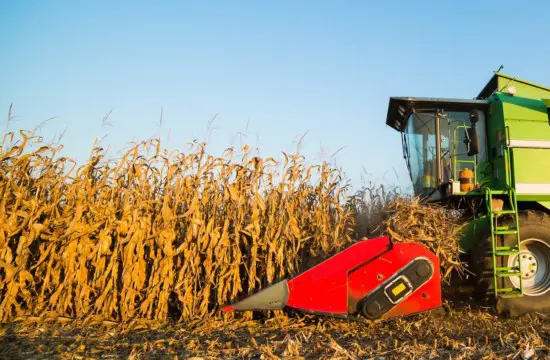Phosphorus is necessary for plant growth. That’s not new information – after all, it is the “P” in the N-P-K macronutrient trifecta, along with nitrogen and potassium, of course. With every essential plant nutrient comes the risk of a yield and profit limiting nutrient deficiency. In the years when additional phosphorus applications are necessary, questions start to form around how much, what form and when to apply. The “when” piece of the equation can be easier to determine, with many benefits to applying phosphorus fertilizer in the fall.
Apply Phosphorus Ahead of Tillage
One of the most important things to note about fall phosphorus application is the ability to apply before fall tillage, which allows for maximum distribution of the nutrient within the root zone. Phosphorus has very little mobility in the soil, so it’s important to apply it close to the heart of the root zone. Incorporating phosphorus into the soil with tillage, as opposed to applying on top of the soil, reduces the risk of runoff. Wet soils in the spring may preclude tillage, which makes fall Phosphorus application a safer choice as fall tillage is more likely. Even in no-till fields, fall application provides more time for Phosphorus to slowly move beneath the soil surface before spring planting.
Know Your Soil pH
Soil pH levels have a direct impact on Phosphorus availability, so maintaining a pH of anywhere between 6.0 and 7.0 is key when managing phosphorus levels. Actually, this is the optimum range for nutrient availability in most crops. When soil pH is lower than 6.0, more iron and aluminum are available to bind chemically with Phosphorus, making it unavailable to plants.
In this case, an application of lime neutralizes soil acidity and adds calcium to help unlock some of the immobilized phosphorus. Lime takes three to six months to dissolve in the soil, making fall applications ideal to provide time for incorporation. The amount of lime is determined by soil test results, and varies with the source of lime being used.
Even in optimum pH conditions, only a very small fraction of Phosphorus is in a soluble form that is available for plant uptake, even though there is often plenty of Phosphorus in the soil. Soil testing can provide accurate pH results, further insight into Phosphorus availability in the soil, and recommendations for application based on crop needs.
Soil Testing is Key to Cost-Efficient Phosphorus Application
The goal is to keep Phosphorus at critical levels — the amount of a nutrient that allows 95-97 percent of a crop’s yield potential to be reached without any additional inputs of that nutrient. Because nutrients are removed via grain and stalks when the crop is harvested, soil testing in the fall after harvest provides an accurate measure of the current nutritional status in a particular field.



